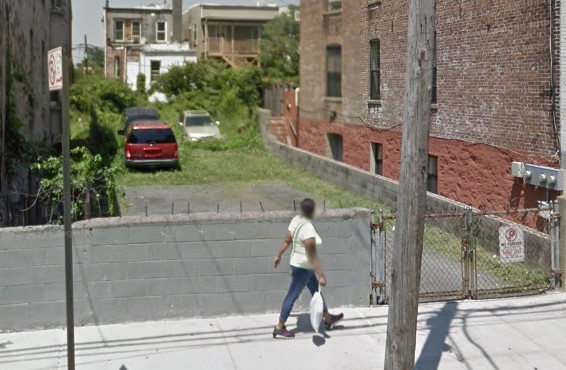
The monks use fine-pointed funnels to deposit the colored sand with exquisite precision to create the richly detailed images on the mandala, which symbolically depicts the Tibetan Buddhist cosmos.
BY COLIN MIXSON
If you love something, set it free.
The Winter Garden at Brookfield Place is hosting a group of Tibetan Buddhist monks, where they are laboring for a week to create an intricate sand mandala made from millions of particles of finely ground marble, before ultimately sweeping the result of all their hard work into the Hudson River.
That final act of destruction, according to the monks, is a demonstration of the impermanence of human existence, which even they admit is a heartbreaking step on the road to Nirvana.
“It’s not very easy to dismantle,” said Geshe Thupten Loden, a Buddhist monk and spokesman for the Drepung Loseling Monastery in India. “After so much effort, it’s very hard. But you soon get used to it.”
The monks began their labors on Apr. 4, clustered in a circle around their budding work of traditional art for up to seven hours a day, pausing only briefly to perform throaty tantric chants, as part of the two-week “Transcendent Arts of Tibet and India” exhibition sponsored by Arts Brookfield.

The sand mandala is created with finely ground marble dyed in various colors.
The Tibetan sand mandalas are magnificent works of craftsmanship and patience, with every grain placed with precision to create an exquisitely detailed image symbolizing the Tibetan Buddhist cosmos. The sand is crushed marble, dyed in the faith’s five primary colors — white, green, yellow, red, and blue, representing the elemental components earth, wind, fire, water, and air — with a full color palette created by overlapping fine layers of the different hues.
Beyond its aesthetic grandeur, the mandala possesses an even greater spiritual beauty, according to Loden, which the monks believe contains the power to enrich the lives of all who pass through Brookfield’s Winter Garden during its making.
“We believe that by making the mandala it brings harmony and balance into nature,” Loden said.
Visitors are free to observe the monks as they work, but they’ll have to stand beyond a rope barrier — the mandalas are so fragile that even the gentle whiff of a sneeze could ruin hours of work, according to Loden.
“We need a special area,” he said. “If the wind blows we can’t do it. The sand is laid down grain-by-grain and it’s very delicate and fragile, so even a light sneezing could destroy it.”
Don’t expect the monks to be especially talkative as they work either. The monks take advantage of the ritual creation as time of meditative contemplation, helping them along the eight-fold path to enlightenment.
“We maintain a meditative mindfulness on the purpose of its creation, to benefit the area and its inhabitants,” Loden said.
In addition to helping the Buddhists achieve a state of sublime bliss, the single-minded focus on their endeavor also helps the monks ignore the agony of stooping over their creation for many hours at a time.
“It’s physically very painful, especially in the shoulder and back,” Loden explained. “We have to bend down while working on it, so it’s very hard.”
The monks will carry on their work until Saturday Apr. 9, when the finished mandala will exist for the brief span of an hour before the monks lead a procession to the Hudson River at 1 p.m., where they will sweep the meticulously placed multi-colored sand into a pile, and dump it into the flowing water, erasing any physical trace of the mandala’s existence.
But far from being a waste of as many as 245 monk-hours of work, according to Loden, the destruction of the mandala will unleash and spread the raw energy of its blessings, which will flow with the Hudson out into the bay, and then on into the ocean. There it will mingle and benefit the creatures of the sea, before evaporation bears it up into the heavens, to rain down across the face of the earth in a shower of divine benediction, according to the monk.
“There’s a global healing concept in releasing the sand into the water,” Loden said.
Following the monks’ departure, Brookfield Place will play host to an Indian troupe of Bharatanatyam dancers Apr. 11–15, who will use the sacred dance style to explore both ancient mythology and contemporary themes, according to choreographer Malini Srinivasan.
The Winter Garden isn’t a typical host for the classical Indian style of dance, and Srinivasan hopes the venue will provide an opportunity for new audiences to discover it.
“I think for Brookfield, it’s not a traditional place for this art form, and because of that it will reach many different audiences than usual,” she said.
For more information and a full schedule, visit the Arts Brookfield website: www.artsbrookfield.com/event/transcendentarts/.

Visitors to the Winter Garden at Brookfield Place can watch the monks at work until 1 p.m. on Apr. 9, when they will take their creation out to the waterfront and dump the sand into the Hudson River.







































